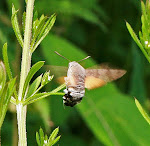Twelve species of Draba (a genus within the cabbage family, Brassicaceae) form an interesting and important component of the high arctic flora of Spitsbergen. It is a taxonomically-difficult genus in which apparently minor characters such as the type and distribution of hairs and the shape of the fruit pods (siliculae) can be critical for their identification. Flower colour are white, cream or yellow. Plants on which there are simultaneously flowers and fruits are the easiest to identify. On Spitsbergen, the various species occupy habitats subject to harsh climatic conditions. These include ‘polygons’ or patterned ground produced by repeated freeze-thaw cycles of the tundra as well as open habitats such as dry screes, gravels and exposed slopes. Eight of the twelve species known from Spitsbergen (some of them very scarce) were seen during visits in 2007 and 2008 and are shown here. All are small, cushion-like rosette plants usually no more than 5 cm high, often less.
.jpg)
.jpg)
Draba arctica J. Vahl (above)
Leaves and stem densely covered with stellate hairs, petals white-cream, about twice as long as the sepals. Gravelly slopes, moraines, rocky hillocks
.jpg)
.jpg)
Draba corymbosa R. Br. (above)
Leaves entire, distinctly pubescent comprising a mixture of hair types, flowers bright yellow, short and broad, siliculae pubescent. Dry gravels with a seasonal thin cover of snow
.jpg)
.jpg)
Draba glabella Pursh. (above)
Leaves lightly toothed with stellate hairs, stems with patent, unbranched hairs, petals white-pale yellow. Dry places, screes.
.jpg)
.jpg)
Draba lactea Adams (above)
Small plants, leaves entire with a few unbranched and branched hairs on the margins, stems glabrous, petals large, white. Moist places, often amongst bryophytes
.jpg)
.jpg)
Draba micropetala Hook. (above)
Leaves entire with dense stellate hairs and rounded apices, stems pubescent, flowers small with narrow yellow petals. Open places on gravel and patterned ground.
.jpg)
.jpg)
Draba norvegica/arctogena Gunn. (above)
Leaves oblong, slightly dentate, bearing a mixture of hair types, flowers white, inflorescence spreading, siliculae oblong, acute. Dry gravels and stony areas. D. norvegica is very variable and forms part of a complex of closely-related species which can be very difficult to identify (as in this case)
.jpg)
.jpg)
Draba oxycarpa Sommerf. (above)
Leaves almost glabrous stem pubescent, petals relatively large, yellow, siliculae large, oval, +/- glabrous. Quite common on both moist and dry ground.
.jpg)
.jpg)
Draba subcapitata Simm. (above)
Small, cespitose plants, leaves entire with mainly unbranched hairs on margins, stems pubescent, petals small, white, siliculae ovate. Base of stems prominently show old growth. Dry exposed gravelly places with a thin winter snow cover.
I’m grateful to Dr. Torstein Engelskjøn of Tromsø Museum Universitetsmuseet for help and discussion regarding Spitsbergen Draba species.
.jpg)






No comments:
Post a Comment